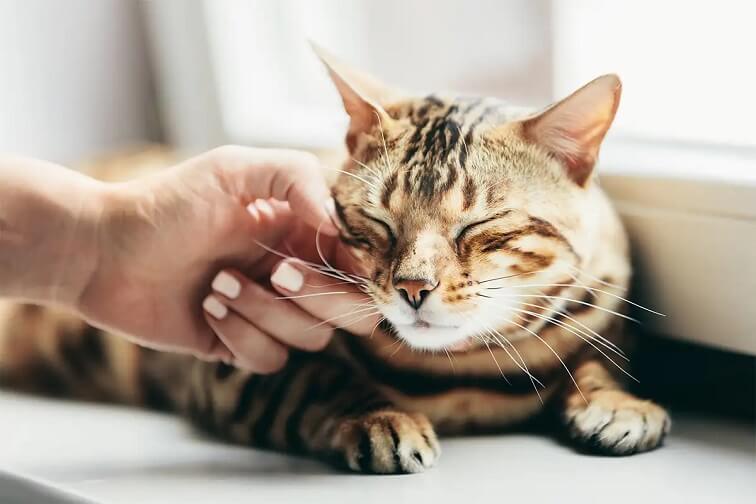
Why Do Cats Purr? Happiness Isn’t The Only Reason
The complicated truth about a cat’s purr...
By Jesslyn Shields | How Stuff Works
There’s nothing quite as soothing as the sound of a cat purring. White noise apps even offer tracks of endless cat purrs along with ocean waves, rain on a tin roof and a crackling fire. But why do cats purr? We generally associate the sound with a satisfied cat, but that purring sound can mean a lot of things, and not all of them mean they’re happy.
And, surprisingly, some of the reasons cats purr remain a bit of a mystery.
How Cats Purr
Purring happens when a cat breathes — an action powered by their diaphragm — and air brushes past the laryngeal muscles, or voice box. This is made possible by an ossified bone in the throat of domestic cats called the hyoid bone, which holds the larynx and tongue in place. During both inhalation and exhalation, air passing over the larynx causes it to vibrate with a rumbling sound. Cats can even purr while making other vocalizations like meowing.
Purring vs. Roaring
We know that domestic cats purr, but for a long time scientists thought they were the only ones in the family Felidae that purred. Over time, they found that other, smaller members of the family could do it too: Species like ocelots, cougars and cheetahs can all purr because they have fairly short vocal chords, as well as a hyoid bone that’s stuck in place.
Big cats like lions, tigers and jaguars have longer vocal chords and a hyoid that is only partially ossified, and they can also roar. This is one of the distinctions that led biologists to separate cats into two subfamilies: Those in family Felinae can purr and those in family Pantherinae can roar.
What a Cat Purring Tells You
As a general rule, animals make low-frequency vocalizations when they’re in positive social situations, but cats purr for all sorts of mysterious emotional reasons.
Kittens are born blind and begin their purring journey when they’re just a few days old, probably to let the mother cats know where they are during feeding times. Cat owners often observe this in adult cats as well — some cats purr to let you know they’re hungry, or even while in the process of eating.
Only in the past 20 years have animal behaviorists considered that a purring cat might not be 100% satisfied. While it’s most common to hear a cat’s purr when they’re snuggled up on their favourite lap getting their head scratched, cats also purr at the vet, when they’re alone, when they’re dying or after they’ve been threatened by another animal. Cats purrs can also have a meow hidden within them — a cry even people who don’t spend much time around cats can pick up.
Cat Purrs Are Healing
One reason your furry friend might purr even in distress has to do with healing. Research has found that when a cat is purring, they’re not only soothing themselves, they’re actually healing themselves with vibrational frequencies (between 25 and 150 Hz) that are often used in medical treatments to manage pain and heal all kinds of maladies, from fractured bones to swelling to shortness of breath.
So let a kitty sit on your lap today. Their purrs might be good for you, too.
Now That’s Interesting
Some biologists used to think purring was the sound of blood coursing through the vein that sends deoxygenated blood to the heart.
* * *
READ MORE: Cats Remember Each Other’s Names, Japanese Study Suggests
Read more on Interesting Cat News: Elon Musk’s Starlink Internet Dishes Are Attracting Cats
Liked it? Take a second to support Collective Spark.
We’d love to hear from you! If you have a comment about this article or if you have a tip for a future Collective Spark Story please let us know below in the comment section.
